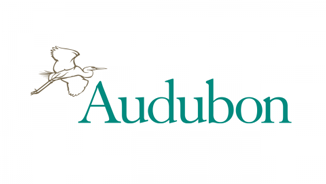
Posted February 1st 2023
Why Some Labelled “Bird-Friendly” Products Can Be Ineffective
Glass collisions are a serious threat to bird populations and unless we start making urban developments that consider wildlife species, this threat will only persist. Fortunately, there are products on the market that prevent birds from colliding with glass. However, not all of these products are created equal. In fact, some may fail to reduce bird collisions.
In today’s blog post, we’ll examine three popular bird collision deterrents that despite long-held beliefs fail to mitigate glass collisions.
3 Bird Collision Deterrents That Miss The Mark
Birds of Prey Decals
You’ve probably seen this first bird deterrent product on the front windows of homes in your neighbourhood or on commercial buildings. Decals come in many different designs, from hawks, owls, and falcons to flowers, leaves, and more. Unfortunately for the users of the design, birds do not recognize the object as anything other than a random shape. The decal’s inability to mitigate glass collisions also stems from the way they are applied. Oftentimes just one or two of the decals are placed on a window, leaving most of the glass untreated and dangerous to local and migrating birds. In order to be effective, the decals would have to form a dense pattern on the outside surface of the window where the reflection issue is happening and be spaced no farther apart than 2" x 2". Not only does this become expensive, but it leaves virtually no viewing space left on the window.
Owl and Coyote Decoys
Another bird collision prevention product that proves to be insufficient is owl and coyote decoys. These lightweight life-sized replicas of predators are placed on roofs and near entryways in hopes of keeping birds away from glass structures. And while birds do naturally avoid predators like owls and coyotes, they’re able to quickly learn that these decoys aren’t the real deal, making them completely ineffective in mitigating glass collisions. In fact, it’s not uncommon to see birds perched on top of scarecrows, statues, and owl decoys.
Ultraviolet (UV) decals and dabbers
Ultraviolet (UV)-based deterrent products, like decals, stickers, and ink, reveal coloured patterns that are designed to deter birds from collisions while being virtually invisible to the human eye. Although many avian species can see some amount of light in the ultraviolet spectrum, it’s unclear how birds perceive UV treatments on glass with the DIY options. Additionally, for UV-based products to work the glass needs to be located in a spot where it receives enough sunlight to trigger the UV effect. This warrants them completely ineffective at night when most birds migrate and during early morning and evening hours. Similar to the birds of prey decals, UV-based decals and dabbers must also be applied close together in a dense pattern to effectively deter avian species. What’s more, according to manufacturers, UV decals and ink need to be replaced approximately once every four months.
Bird Collision Deterrents That Do Work
There are a variety of effective options to deter birds from colliding with glass.
Bird-Safe Glass Options
- Decorative and Privacy Window Films: Frosted or decorative window films can improve the look of your windows while helping birds avoid collisions with glass. Just make sure designs meet FLAP Canada’s Guidelines for Visual Markers and are placed on the outside surface.
- Perforated Window Film: Perforated window film establishes an opaque surface on the outside of the glass that looks like a solid barrier to birds.
- Feather Friendly® Bird Deterrent Markers: Feather Friendly’s bird deterrent markers are scientifically proven to prevent bird collisions with glass surfaces without compromising your residential or commercial building’s aesthetics or views inside and out. Unlike film coverings, Feather Friendly® markers only cover 8 percent of the glass, minimizing the visual impact while maximizing the durability and longevity of your treatment.
- Window Grilles: Decorative and security window grilles can appear as a barrier for birds to avoid, as long as they follow the recommended spacing.
- Exterior Shades or Solar Screens: Motorized or permanently fixed solar screens and/or shades covering the outside surface of windows are another way to deter birds from colliding with windows. However, they will only prevent birds from hitting windows when drawn.
- Exterior Window Screens: These special window screens are mounted on the outside of a window and work as a flexible barrier between birds and the glass.
- Patterns with Tempera Paint: Drawing or painting patterns on the outside of your window can be a fun artistic way to prevent collisions. Make sure not to leave any gaps greater than 5 cm (2 inches).
- Soap: In a pinch, drawing patterns on the outside of the glass with a bar of soap may also reduce glass collisions if following the scientific guidelines.
5 Things to consider for any Collision Mitigation Project
To ensure your bird collision mitigation project is a success, there are 5 things you should consider:
Which Collision Danger Do You Need To Treat?
How you decide to stop birds from flying into your windows depends on whether collisions are the result of reflections or fly-throughs.
Reflection
Reflection is when the surrounding habitat and sky are mirrored on the glass, causing the illusion of an environment that doesn’t exist. If your glass has reflection, bird deterrent markers will need to be placed on the outside surface to be successful.
Fly-Through
Fly-Through is when birds can see a habitat or sky that really does exist on the other side but don’t realize the glass is a solid barrier preventing them from reaching it. A clear glass railing or a glass walkway are common examples. If your glass is fly-through glass, Feather Friendly bird deterrent markers in black can be placed on either side of the glass.
Appropriate Spacing
Birds are well known for their incredible flying skills and can fit through small spaces at high speeds. Thus spacing is a critical element in all forms of collision prevention. If the gap between the markers is too large, birds may believe they can fit through the space and attempt to fly through. The closer together the spacing, the better the protection, especially for smaller avian species like hummingbirds. The best level of protection is to use markers no smaller than 1/4 “(6 mm) and spaced no more than 2” x 2” (50 mm x 50 mm). When consistent spacing is applied, the bird will no longer be able to find enough space to fit through, and as a result, will avoid the area altogether.
Contrast
For any bird collision prevention efforts to be effective, they must be visible under various lighting conditions and demonstrate enough contrast against the type of glass. Birds should be able to notice the treatment in time to change course. For example, using a green-coloured marker on a window reflecting vegetation would disappear and fail to deter local and migrating birds. To ensure high contrast, we recommend using light grey markers for reflective glass and black markers for fly-through zones. Using higher contrast treatments, allows birds to perceive the barrier well in advance and alter their direction.
Height
Treating the entire building from top to bottom isn’t always necessary to effectively prevent glass collisions. In this case, establishing an area of bird activity should be determined. When doing so, it’s essential to consider the surrounding area (ex., close to a nature reserve, waterways, migratory bird routes), mature tree canopy, and municipal regulations/standards. Most city standards in North America consider the first 4 to 5 stories of a building or to the top of the mature tree canopy, whichever is greater.
Lighting
Birds migrate at night to avoid predators and navigate by the stars. Light pollution interrupts this journey, often attracting them to the city, where they become trapped and disoriented in maze-like surroundings. Once drawn into the city, they are more likely to succumb to glass collisions. Turning off non-essential lights from 11 p.m. to sunrise dramatically reduces this hazard by allowing birds to safely continue their migratory journeys. In addition, extensive data supports lights out programs, particularly during Spring and Fall Migration.
Additional Factors to Consider That Can Influence The Risk of Collisions
There are several other factors that can influence the threat glass structures pose to bird species. These factors can include the following:
Amount of Glass
Several studies have found the amount of glass on the face of a building to be the best predictor of mortality resulting from a bird collision. Specifically, a 10 percent increase in glass area correlated to a 19 percent increase in collisions (or more, depending on the season).
Type of Structure
Different types of structures demonstrate different rates of avian mortality. For instance, research indicates that high-rise buildings see a higher average of birds colliding at a single location, with an average of 24.3 bird collisions per building. However, low-rise buildings aren’t too far behind, with 21.7 birds per structure. And although residential homes typically have fewer birds hitting on average, because there are so many more homes than commercial buildings, they make up a majority of overall bird strikes.
Habitat Surrounding Buildings
The more vegetation surrounding a structure, the more likely it will attract local and migrating birds, thus increasing the threat of glass collisions. Aquatic habitats like streams, lakesides, and marshes, are also highly favourable among birds. These habitats are attractive during the day and when birds end their migration stages at night. The space between two points of vegetation must also be considered. For example, birds fly considerable distances daily to reach viable habitats for food, water, and shelter. While in flight, they may encounter structures like bus shelters and gazebos, which can be highly unsafe.
Protect bird populations while enhancing your building’s design
Looking for a way to protect bird species from colliding with glass surfaces while still maintaining your home or commercial space’s appearance? Trust Feather Friendly’s proven solutions. Feather Friendly® positively impacts bird conservation. Since 2006, we have installed over 6 million square feet of glass worldwide, saving important biodiversity for the generations to come. Tested and approved by the American Bird Conservancy and Dr. Daniel Klem Jr., as well as supported by the National Audubon Society, FLAP Canada and others, we have several solutions for any size project.
We’d love to help you with your next project. Contact us today to discuss our residential and commercial solutions.
Partners
We are honoured to form partnerships with organizations who demonstrate
an ongoing commitment to bird conservation.



